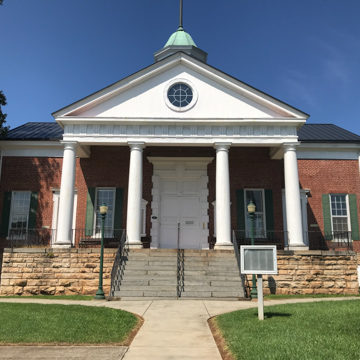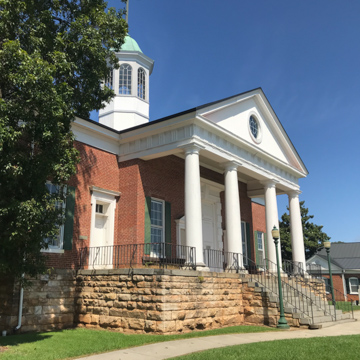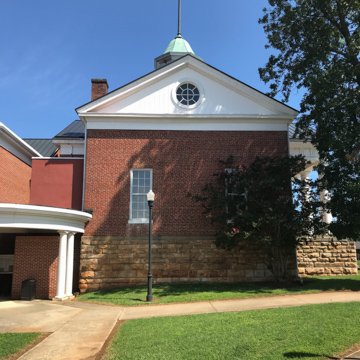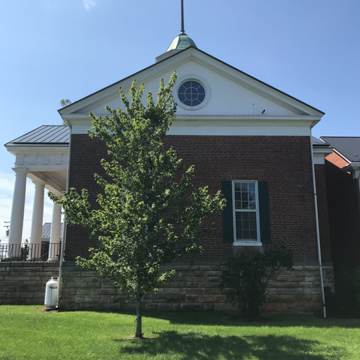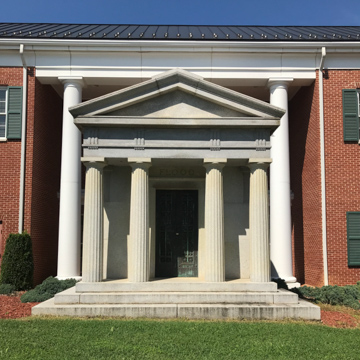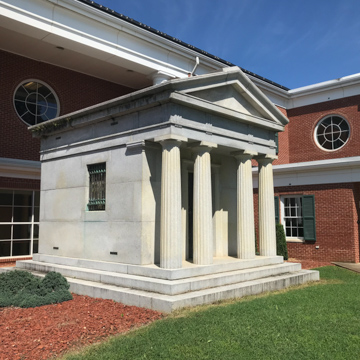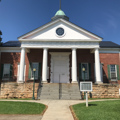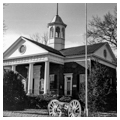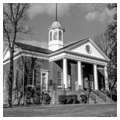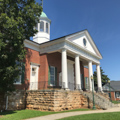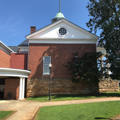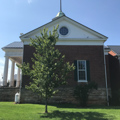When a fire in 1892 destroyed the Appomattox courthouse of 1846 standing near the site of General Lee's surrender, county officials chose to build a new courthouse three miles away near the railroad station, thereby effectively moving the center of town. Although it underwent some Colonial Revival polishing by Stanhope S. Johnson of Lynchburg in the early twentieth century, the old section of the courthouse (now used as Appomattox Courthouse Theatre) is one in Virginia's long line of nineteenth-century classical courthouses. The one-story brick building has a slightly projecting central pavilion with a four-columned Tuscan portico set on a raised terrace extending on either side to the secondary front entrances. The portico features a large circular window in its pediment, an element echoed in the side pediments and dating from the 1930s Colonial Revival remodeling. The courthouse's remodeling veered down an odd architectural path with the addition of a Georgian Revival monumental door case featuring wooden quoins crowned with an entablature pierced by an oversized keystone. Combined with the Georgian Revival octagonal cupola with arched windows, the result is an odd amalgam.
To the left rear of the old section is the Flood Family Mausoleum (c. 1900). This may be the only mausoleum standing in a Virginia courthouse square. The austere granite tomb, a miniature temple set on a three-stepped plinth, has four finely executed Doric columns supporting a full entablature below its pediment. Unusual in its placement, the mausoleum is a testament to the political influence of its builder, congressman Henry Flood, uncle of senator Harry Flood Byrd Sr. The mausoleum now stands somewhat awkwardly in front of the new two-story brick courthouse that is attached to the rear of the old courthouse. On the right side of the new section, a one-story semicircular classical portico leads to the interior where the portraits of past and present judges look down on the proceedings.

